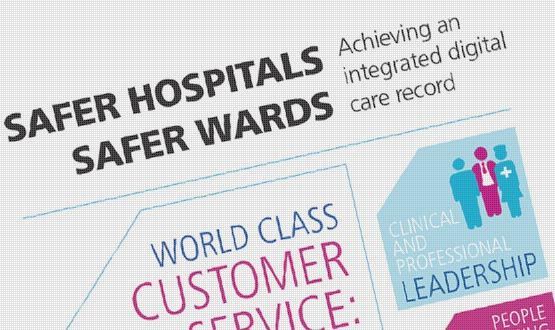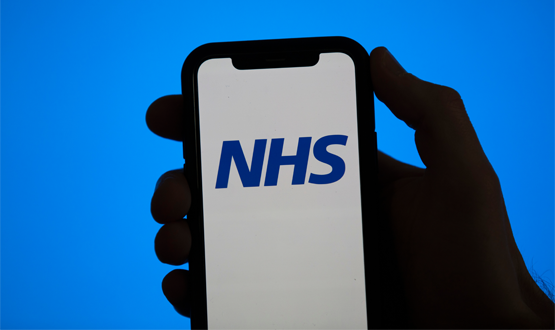New acronym; new hope?
- 1 July 2013

One of the first and clearest messages to come out of The Big EPR Debate was that NHS England should define its terms before setting out the future of electronic patient records.
So the first, good piece of news to come out of the ‘Safer Hospitals, Safer Wards: Achieving an integrated digital care record’ guidance that was issued today is that the commissioning board has done just that.
The less good news is that in doing so it has introduced a new acronym to NHS IT – IDCR. Despite the first half of the guidance’s title (with its unfortunate focus on hospitals), this is meant to convey the idea of a record that can be used across health and social care and accessed by patients.
The guidance emphasises that it wants solid underpinnings for IDCRs, ranging from solid infrastructure to a “user interface that is intuitive and accessible in an increasing range of operational environments.”
It wants to make sure that records are well kept, and linked by the NHS Number, the use of which will become a contractual requirement from next April.
However, in contrast to the years of the National Programme for IT in the NHS, it wants trusts to buy their own IT – with some support from the £260m Technology Fund for projects already in the pipeline.
From paperless to IDCR
Today’s guidance effectively puts flesh on the bones of health secretary Jeremy Hunt’s striking announcement back in January that he wanted a ‘paperless’ NHS by 2018. Hunt went on to define a ‘paperless’ NHS as one using electronic records and communications.
But the publication of a report by PriceWaterHouseCoopers, outlining a set of left-over NPfIT ideas and a bunch of random projects that were supposed to show that the NHS could save millions by digitising its ways of working, raised fears that the paperless agenda would lack focus.
EHI launched The Big EPR Debate to urge NHS England, which was tasked with producing guidance on the records part of the new agenda, to keep faith with the idea of an EPR as a core organisational record on which other uses could be built.
The debate asked readers how NHS England should pursue this agenda, and found considerable support for the ideas of the pre-NPfIT NHS IT strategies of the 1990s, which focused on building EPRs from electronic patient record systems, steadily adding more complex functionality.
In today’s context, this translated into support for the idea of a roadmap or roadmaps detailing the way forward for trusts at different stages of digital development.
The second bit of good news in today’s guidance is that this is an approach that the commissioning board seems keen to adopt, although some of the detail has to be developed.
From roadmap to clinical digital maturity index
The guidance says NHS England wants to see the creation of a clinical digital maturity index for the NHS that will define a trust’s levels of infrastructure, system, and organisational maturity, and guide trusts on their next steps.
“The key aim is to support all organisations moving up the maturity levels, no matter what their starting point,” it says.
However, the guidance is careful to emphasise – in contrast to those 1990s IT strategies and some of the well known but highly prescriptive US maturity models – that “there is no one route or sequence that should be followed for the adoption of systems.”
In very marked contrast to the years of the national programme, it also argues that trusts can adopt a range of procurement strategies when it comes to getting systems in place; ranging from buying all – or all of their core – systems from a ‘single supplier’ to adopting a ‘best of breed’ strategy centred on a portal.
What matters, it suggests in a long section on ‘architecture and standards’ is that systems join up and use national standards for patient identity – the NHS Number – the digital capture of data, the storage and indexing of that data, sharing it with other organisations, and making sure that information governance is maintained.
At the same time, the guidance says that clinicians must be involved in the future development of IT and information projects, and gives a strong push to the appointment of chief clinical information officers to achieve this.
EHI ran a successful EHI CCIO Campaign in 2011 to encourage trusts to appoint CCIOs, and now hosts the CCIO Leaders Network to support the CCIOs in place and to encourage more, young clinicians to get involved in healthcare technology.
A centre distracted by the VistA?
If there is less good news in the strategy, it comes in some weak sections on national infrastructure, on the introduction of some potential distractions, from a lack of information about next steps, and from some issues around money.
NPfIT had many, many faults, but it did create some good national infrastructure in the form of N3 and the Spine and it did run some fitfully successful projects to create the electronic booking, prescribing, and Summary Care Records services.
The guidance is largely silent on the future of these, except for the SCR, which is not only supported but subtly expanded.
If the guidance is anything to go by, then the SCR will gain new sections detailing the key events in a patient’s medical history and end of life care plans; to the probable consternation of the privacy campaigners that have fought its roll-out for the best part of ten years.
The big potential distraction is the indication that NHS England – or perhaps just one or two key individuals within it – wants to Anglicise the US Veterans Health Administration, VistA.
Admittedly, the guidance says the commissioning board will look at supporting other NHS open source projects and the growing NHS open source community. But it says it wants to “adopt the ethos behind [VistA’s] creation, and potentially part, or all, of the technical product.”
To underline how serious it is about this, NHS England has included a question on whether trusts are interested in piloting an NHS VistA core product, or on putting their own projects into an NHS VistA development into the application pack for Technology Fund money.
Targets and incentives
The Big EPR Debate not only recorded support for a digital roadmap, but for targets for reaching key milestones. Many commenters felt that it would be useful to have incentives – but not disincentives – for reaching these, and for showing the ‘meaningful use’ of systems.
The guidance that came out today is weak on these points. EHI has always understood that the guidance was supposed to help trusts to form their plans to use EPRs, and that trusts would be required to have plans in place by next April to implement the following year.
The IDCR document doesn’t mention these dates, or say anything much whether – or how – progress will then be monitored. Nor does it hold out many carrots, beyond that application form for the Technology Fund.
NHS England’s director of strategic systems and technology, Beverley Bryant, told an Big EPR Debate round table that EHI hosted last week that: “You can call me an old cynic, but I think there is more chance of people reading [the guidance] if there is an application form at the back to get hold of the money.”
However, trusts will need to be speed readers, because they must have applications in by the end of the month.
To try and bridge the gap between the strategy, the plans, and the money, the guidance indicates that priority will be given to funds that take forward VistA, address Hunt’s initial proposal to drive e-prescribing across the NHS, or address the start and end of the digitisation journey.
So, trusts that have barely started can put forward projects to take some first steps, while more advanced trusts will be expected to focus on projects that will join up information across health economies.
There are also some severe restrictions on what the capital funding can be used for; which seem to exclude some of the infrastructure and building block-type projects that the guidance says it wants to see underpinning developments.
Still, Bryant also told the round table that if she did “nothing else” she would be going into battle with the Treasury every September and “fighting” for more money.
If the NHS can show that it is spending the funding well and delivering benefits, then it will get it, she added. As a result, although it is not a core part of today’s guidance, there are indications that ‘meaningful use’ on the US model may become more important in the future.
“Going forward, we expect to measure and monitor organisations and systems to ensure that they can demonstrate a progressively increasing level of ‘meaningful use’ of an IDCR and wider digital technologies in the delivery of care,” it says.
Grand, fond hopes
Sir David Nicholson, the outgoing chief executive of NHS England, who for a long time was senior responsible owner for NPfIT, has written the forward to the document.
Like so many similar introductions to similar documents, this says: “Better use of digital technologies will transform clinical effectiveness and outcomes, and reduce the burden on frontline staff. It will enable the integration of the care around the person who is being treated, and it will empower people to do more for themselves.”
It can only be hoped that, this time, the NHS in England is on the right track, and that, as Sir David concludes: “This is how we will deliver high quality care for all, now and for future generations.”




